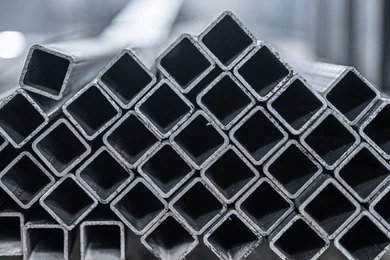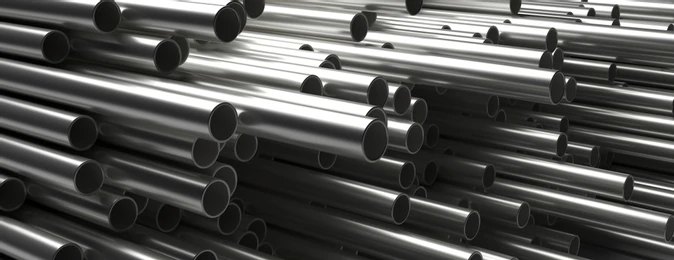Steel is one of the most versatile and widely used materials in the world, known for its strength, durability, and adaptability. Among the many types of steel, carbon steel and stainless steel are two of the most common and essential. Each has unique properties and applications, making it crucial to understand their differences to select the right material for your needs. In this blog, we’ll explore the key differences between carbon steel and stainless steel, their advantages, and their specific applications.
Composition and Properties
The primary difference between carbon steel and stainless steel lies in their composition and the elements added to enhance their properties.
Carbon Steel:
- Composition: Carbon steel primarily consists of iron and carbon, with the carbon content varying between 0.2% and 2.1% by weight. Other elements, such as manganese and silicon, may also be present in small amounts.
- Properties: Carbon steel is known for its high strength and hardness. However, it is less resistant to corrosion compared to stainless steel. The higher the carbon content, the harder and stronger the steel becomes, but it also becomes less ductile.
Stainless Steel:
- Composition: Stainless steel contains iron, carbon (up to 1.2%), and a significant amount of chromium (at least 10.5% by weight). The chromium content forms a passive layer of chromium oxide on the surface, which provides corrosion resistance. Other elements like nickel, molybdenum, and nitrogen may also be added to enhance specific properties.
- Properties: Stainless steel is highly resistant to corrosion and staining. It maintains its strength and toughness at high temperatures and is also known for its aesthetic appeal due to its shiny surface.
Corrosion Resistance
One of the most significant differences between carbon steel and stainless steel is their resistance to corrosion.
Carbon Steel:
- Carbon steel is more prone to corrosion and rust when exposed to moisture and oxygen. This is because it lacks the protective chromium oxide layer found in stainless steel.
- To improve its corrosion resistance, carbon steel is often coated with protective materials such as paint, oil, or galvanization (zinc coating).
Stainless Steel:
- Stainless steel’s main advantage is its exceptional corrosion resistance, thanks to the chromium content. The chromium oxide layer acts as a shield, preventing oxidation and rust.
- This makes stainless steel ideal for applications where the material is exposed to moisture, chemicals, and other corrosive elements, such as in marine environments, kitchens, and medical equipment.
Strength and Hardness
Both carbon steel and stainless steel are known for their strength, but there are differences in their mechanical properties.
Carbon Steel:
- Carbon steel generally has a higher tensile strength and hardness compared to stainless steel. The higher carbon content increases the hardness and strength but decreases the ductility.
- High carbon steel (with more than 0.5% carbon) is particularly strong and hard, making it suitable for cutting tools, blades, and heavy-duty machinery.
Stainless Steel:
- While stainless steel may not be as hard as high carbon steel, it still offers considerable strength and toughness. The presence of chromium and other alloying elements enhances its overall durability.
- Stainless steel is more ductile than high carbon steel, allowing it to be formed and shaped more easily. This makes it suitable for a wide range of applications, including structural components and decorative items.
Applications
The choice between carbon steel and stainless steel often depends on the specific requirements of the application.
Carbon Steel Applications:
- Construction: Carbon steel is commonly used in construction for structural components such as beams, columns, and pipelines due to its strength and cost-effectiveness.
- Automotive: In the automotive industry, carbon steel is used for parts that require high strength and durability, such as chassis and body panels.
- Tools and Machinery: High carbon steel is ideal for making cutting tools, blades, and heavy machinery components due to its hardness and wear resistance.
Stainless Steel Applications:
- Food and Beverage: Stainless steel is extensively used in the food and beverage industry for equipment, containers, and surfaces due to its corrosion resistance and ease of cleaning.
- Medical: Its biocompatibility and resistance to corrosion make stainless steel suitable for medical instruments, implants, and surgical tools.
- Aerospace and Marine: Stainless steel’s ability to withstand harsh environments makes it ideal for aerospace components and marine applications.
- Architecture: Stainless steel is used in architecture for its aesthetic appeal and durability, often seen in facades, railings, and sculptures.
Cost and Maintenance
Cost and maintenance requirements also play a crucial role in determining whether to use carbon steel or stainless steel.
Carbon Steel:
- Carbon steel is generally less expensive than stainless steel, making it a cost-effective choice for many industrial applications.
- However, the maintenance requirements for carbon steel are higher due to its susceptibility to corrosion. Protective coatings and regular maintenance are necessary to prevent rust and extend its lifespan.
Stainless Steel:
- Stainless steel is more expensive than carbon steel due to the addition of alloying elements like chromium and nickel.
- The higher initial cost is often offset by its lower maintenance requirements and longer lifespan. Stainless steel’s corrosion resistance reduces the need for protective coatings and frequent maintenance, making it a more cost-effective choice in the long run for certain applications.
Environmental Impact
The environmental impact of materials is an important consideration in today’s sustainability-focused world.
Carbon Steel:
- Carbon steel production involves the emission of greenhouse gases and energy consumption. However, carbon steel is highly recyclable, which helps mitigate its environmental impact.
- Recycling carbon steel reduces the need for raw material extraction and energy use, making it a more sustainable option.
Stainless Steel:
- Stainless steel production also involves significant energy consumption and emissions. However, like carbon steel, stainless steel is highly recyclable.
- The durability and long lifespan of stainless steel further contribute to its sustainability, as it reduces the need for frequent replacements and conserves resources over time.
Summary: Carbon Steel vs Stainless Steel
Understanding the differences between carbon steel and stainless steel is essential for selecting the right material for your specific application. Here’s a quick summary of the key differences:
Carbon Steel:
- Higher tensile strength and hardness
- More prone to corrosion and rust
- Less expensive, but higher maintenance requirements
- Commonly used in construction, automotive, and tool manufacturing
Stainless Steel:
- Exceptional corrosion resistance
- Lower hardness but higher ductility
- More expensive, but lower maintenance requirements
- Ideal for food and beverage, medical, aerospace, marine, and architectural applications
FAQs
What are the main differences between carbon steel and stainless steel?
The main differences lie in their composition, corrosion resistance, strength, applications, and cost. Carbon steel is stronger and harder but more prone to rust, while stainless steel is more resistant to corrosion and easier to maintain.
Which is better for construction, carbon steel or stainless steel?
Carbon steel is generally preferred for construction due to its higher strength and lower cost. However, stainless steel may be used in specific applications where corrosion resistance is critical.
Can stainless steel be used for cutting tools?
While stainless steel is used for some cutting tools, high carbon steel is typically preferred due to its greater hardness and ability to hold a sharp edge.
Why is stainless steel more expensive than carbon steel?
Stainless steel contains additional alloying elements like chromium and nickel, which enhance its properties but also increase its cost. The manufacturing process for stainless steel is also more complex.
What makes Abbott Ball’s steel products unique?
Abbott Ball offers precision-engineered steel balls with strict adherence to quality standards. Their products, available in both carbon steel and stainless steel, are known for their reliability, durability, and superior performance in various applications.
Conclusion
Choosing between carbon steel and stainless steel depends on the specific requirements of your application. While carbon steel offers higher strength and hardness at a lower cost, stainless steel provides unmatched corrosion resistance and lower maintenance needs. Understanding these key differences will help you make an informed decision, ensuring the best performance and longevity for your projects. Abbott Ball remains committed to providing high-quality steel products that meet the diverse needs of industries worldwide.


